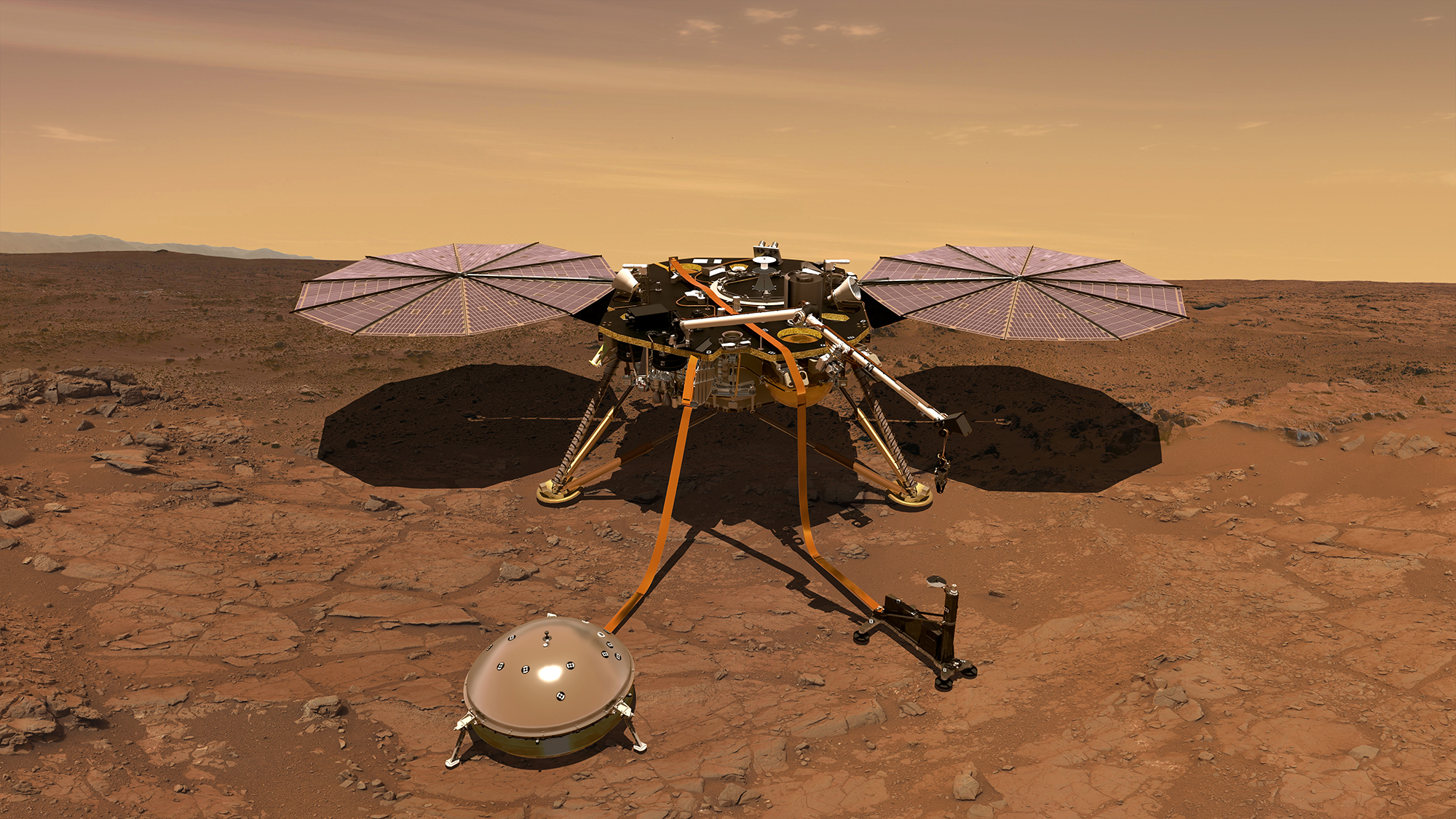Why Is NASA Looking for 'Marsquakes'?

Scientists are keeping their fingers crossed for numerous quakes — marsquakes, that is.
Today (Nov. 26), NASA's newest Mars exploration mission, called the Interior Exploration using Seismic Investigations, Geodesy and Heat Transport (InSight) mission, is scheduled to touch down on the surface of the Red Planet. With a design inspired by the older Mars lander Phoenix, this next-generation machine will extend its robot arms and place a seismometer — a device that measures quakes — onto the surface of Mars. If all goes well, for two Earth years (one Mars year), it will listen for vibrations that happen beneath the surface of the planet, to answer some fundamental questions about how rocky planets, including our own, formed. [Mars InSight Photos: A Timeline to Landing on the Red Planet]
But what are marsquakes, and why are NASA scientists hunting for them?
Marsquakes, just like earthquakes, are vibrations that move through the ground. But the way these quakes form on the Red Planet may be fundamentally different from how they form on Earth. And it turns out that these differences could help scientists better understand what early Earth looked like.
For the most part, earthquakes on our planet occur because of plate tectonics, the mechanics that occur as the plates that make up Earth's outer shell glide over the mantle, Earth's rocky innards. These tectonic plates are constantly moving — roughly between 2 and 4 inches (5 to 10 centimeters) each year, according to Britannica — bumping into and slipping past one another. Sometimes, when a plate is moving past another plate, its rough edge gets stuck and stops, while the rest of the plate continues to move. Because that part of the plate is stuck, it stores up the energy it would normally use to move, eventually catching up to the rest of the plate and releasing all the energy as seismic waves — causing shaking, according to the U.S. Geological Survey (USGS).
But Mars doesn't have a fragmented outer shell like Earth does. So how does it still have quakes? Well, it turns out, other phenomena can also cause these seismic waves, such as the stress of a slightly shrunken surface caused by planetary cooling, the pressure of magma pushing up toward the surface or even meteorite impacts, according to NASA.
But these vibrations, in comparison to Earth's, are very small.
Sign up for the Live Science daily newsletter now
Get the world’s most fascinating discoveries delivered straight to your inbox.
"What we're trying to measure are vibrations so small, they're kind of on the scale of an atom," Bruce Banerdt, InSight principal investigator at NASA's Jet Propulsion Laboratory, said during a news conference on May 3.
Quakes tell us what's beneath the surface
As the seismic waves "travel through the planet, they actually pick up information along the way," Banerdt said. Different materials underground reflect seismic waves in different ways, and from those differences, scientists will be able to figure out the makeup of Mars' interior. "You can put together a 3D view of Mars," Banerdt said.
While Earth's early history has been wiped away by the constant churning and recycling of the crust, Mars still bares fingerprints of its own, according to Banerdt. "The Earth is so active that the evidence of all those processes has gotten basically erased by plate tectonics," he said.
So, looking at seismic waves inside our own planet doesn't tell us much about how it formed. Since all the rocky planets formed the same way, and then radically diverged in makeup and appearance over billions of years, looking at Mars could tell us a lot about how our own planet formed, Banerdt said.
InSight also has instrumentation to do things such as measure the temperature of Mars' interior and track the "wobble" of the north pole to reveal the makeup and size of the planet's metallic core, according to NASA.
"The science that we want to do with this mission is really a science of understanding the early solar system," Banerdt said.
Editor's note: This story was originally published May 3, 2018, two days before the scheduled launch of the Mars InSight lander from Vandenberg Air Force Base in California. The launch took place on May 5, 2018 at 4:05 a.m. PT.
Originally published on Live Science.

Yasemin is a staff writer at Live Science, covering health, neuroscience and biology. Her work has appeared in Scientific American, Science and the San Jose Mercury News. She has a bachelor's degree in biomedical engineering from the University of Connecticut and a graduate certificate in science communication from the University of California, Santa Cruz.









